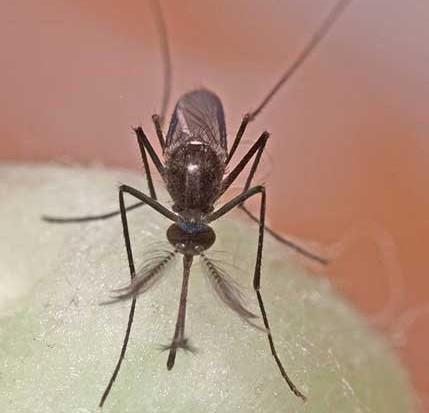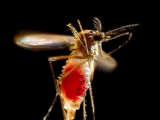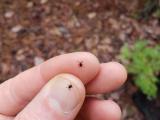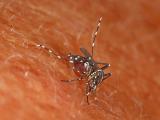Though it's too soon to say if the connection will be seen in humans, experiments in mice with West Nile and Powassan viruses—in the same family as Zika—showed that they can spread from mothers to offspring, causing brain damage and fetal death.
The findings hint that there may be other vector-borne viruses with the capacity to cause miscarriages and birth defects. A team led by researchers at Washington University School of Medicine reported their findings today in the latest issue of Science Translational Medicine.
Eyeing other flavivirus birth defect threats
Jonathan Miner, MD, PhD, the study's senior author and assistant professor of medicine at Washington University, had seen a few medical literature reports that suggested West Nile virus (WNV) could cause congenital infections and birth defects, but no rigorous studies had been done to see if other flaviviruses had similar potential.
To explore the possibility, Miner and his team set out to explore in mouse experiments if West Nile and Powassan viruses could pass from mouse mothers to their pups, given that both viruses have been linked to neurologic problems.
WNV is present in many US states and has triggered epidemics, such as a large one in 2012 that sickened nearly 5,700 people, with Texas bearing the greatest burden. In contrast, infections from Powassan virus, spread by ticks, are rare, with about 100 cases being reported in the United States over the past decade, according the US Centers for Disease Control and Prevention.
For comparison, the scientists also included two mosquito-borne viruses from the more distantly related alphavirus family—chikungunya and Mayaro.
Mice offspring had severe damage from WNV
Researchers experimentally infected female mice at day 6 of their pregnancies with one of the four viruses, then examined the placentas and fetuses for evidence of the viruses a week later.
All four viruses were found in the placentas and fetuses, but WNV levels were 23- to 1,500-fold higher than the other three viruses in the placentas and 3,000- to 16,000-fold higher in fetal mice heads.
Microscopic examination of brain tissue from the West Nile–infected fetuses showed severe damage, though tissue from those infected with chikungunya appeared healthy.
Also, half of the fetuses of mouse moms infected with WNV or Powassan virus died within 12 days of infection, compared with no deaths in fetuses from mice infected with chikungunya or Mayaro viruses.
Another part of the study that used human placental tissue to assess replication of the four viruses plus Zika virus showed that three flaviviruses—Zika, West Nile, and Powassan—multiplied, but chikungunya and Mayaro viruses did not.
Miner said in a press release from Washington University School of Medicine that millions of people were infected with Zika virus in a short time, which might have made it easier to see that in humans, the virus can cross the placenta and cause fetal damage.
"But our data show that other flaviviruses have the same capacity, at least in mice. It may be that it's just more difficult to prove a link between West Nile and birth defects because the number of cases is smaller and infections are more sporadic," he said. Miner added that the findings might prompt scientists to look at whether WNV infection can cause miscarriage and brain damage.
"I don't want people to think that we're saying West Nile is definitely a threat to pregnant women and their babies," Miner said. "We're saying it's possible. But until we know for sure, it's always a good idea to wear bug repellant."
A connection worth a closer look
Peter Hotez, MD, PhD, dean of the National School of Tropical Medicine at Baylor College of Medicine in Houston, said the study is interesting, and that Zika drew attention, because it is teratogenic and produced visible birth defects. "But West Nile Virus to our knowledge does not do this."
However, he said it's possible that congenital WNV infection produces more subtle but still clinically important neurologic effects and disease.
"For me the study reported here should prompt efforts to conduct retrospective epidemiologic studies to determine whether the findings reported in mice with WNV also have relevance to human disease," Hotez said, adding that because WNV remains one of the most common arbovirus infections in the United States, researchers should be able to address the question.
See also:
Jan 31 Sci Transl Med abstract
Jan 31 Washington University School of Medicine press release


















